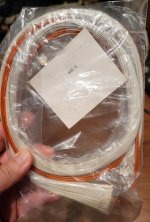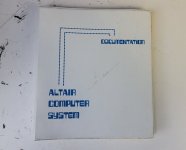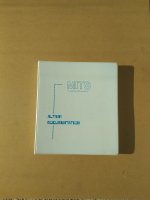falter
Veteran Member
Hi!
I picked up this 'hodge-podge' Altair 8800 over Xmas. A while back I had gotten a bunch of Altair Rev 0 parts, including CPU and RAM cards, as well as the top and bottom of the case. Someone was kind enough to offer me the internal chassis from an 8800b turnkey, and my intent was to build the thing up from there. However, I eventually got discouraged. The front dress panel for an 8800 is almost unobtanium, and one that came up about a year ago went for over $600. The actual 4 slot Altair bus seems to come up infrequently, and the power supply almost never. Since the front panel board I had had no switches or LEDs, finding period correct parts was going to be almost impossible.
So then this other Altair comes up for sale, and it's a lot cheaper than usual because it has an aftermarket S100 plate, and an 'upgraded' power supply, the dress panel is missing its badge and so on. I got it for $2k, and was happy with that because it at least gives me the chance to actually use thing. Yeah, it has some issues, but it's not $6k, so there's that. It had a Rev 0 CPU and 1K RAM card, and at least according to my records that kind of checked as I found at least 4 machines in the early serial 223xxx range like this one that had Rev 0 cards like this one. I decided to sell my other Altair parts, keeping only the outer cover, and my thinking is I'll build the 8800b turnkey chassis into an 8800b turnkey again one day. This machine didn't have the metal Altair badge, but I had an NOS one so I used that.
However, after the auction, I asked the seller for some background info as he was the original owner, and he tells me that this machine was actually a Rev 1 originally, and for some reason he had taken out the Rev 1 CPU card, and subbed in a Rev 0 he had from another prior machine. He told me he planned to sell the Rev 1 card separately later on. I thought that was odd.
The seller tells me the power supply puts out +10V, so it really generates some heat on the voltage regulator for the CPU card, so he's got a big long heatsink on it. Doesn't have one for the VR on the memory card.
In pics, he fired up the machine with the cards in it. So if that could have caused any damage it's already done, but he says he ran it like that for years. Anyway, I did my due diligence and checked out the voltages on pins 1 and 2 and 51 and 52, and sure enough we're getting +10V on 1 and 51, as well as 19.5 on pin 2 and -19.5 on pin 52.
My question is, can it actually run like this safely? I do intend to look for an original 8800 PSU, but I think it'll be a long time before I see one. Would love to use it in the meantime. I'm sure the +5V regulators can handle an extra +2V incoming, but I'm not sure how things are regulated for what's supposed to be +16 and -16v.

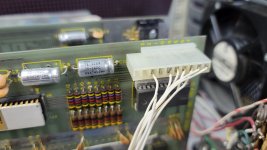
I picked up this 'hodge-podge' Altair 8800 over Xmas. A while back I had gotten a bunch of Altair Rev 0 parts, including CPU and RAM cards, as well as the top and bottom of the case. Someone was kind enough to offer me the internal chassis from an 8800b turnkey, and my intent was to build the thing up from there. However, I eventually got discouraged. The front dress panel for an 8800 is almost unobtanium, and one that came up about a year ago went for over $600. The actual 4 slot Altair bus seems to come up infrequently, and the power supply almost never. Since the front panel board I had had no switches or LEDs, finding period correct parts was going to be almost impossible.
So then this other Altair comes up for sale, and it's a lot cheaper than usual because it has an aftermarket S100 plate, and an 'upgraded' power supply, the dress panel is missing its badge and so on. I got it for $2k, and was happy with that because it at least gives me the chance to actually use thing. Yeah, it has some issues, but it's not $6k, so there's that. It had a Rev 0 CPU and 1K RAM card, and at least according to my records that kind of checked as I found at least 4 machines in the early serial 223xxx range like this one that had Rev 0 cards like this one. I decided to sell my other Altair parts, keeping only the outer cover, and my thinking is I'll build the 8800b turnkey chassis into an 8800b turnkey again one day. This machine didn't have the metal Altair badge, but I had an NOS one so I used that.
However, after the auction, I asked the seller for some background info as he was the original owner, and he tells me that this machine was actually a Rev 1 originally, and for some reason he had taken out the Rev 1 CPU card, and subbed in a Rev 0 he had from another prior machine. He told me he planned to sell the Rev 1 card separately later on. I thought that was odd.
The seller tells me the power supply puts out +10V, so it really generates some heat on the voltage regulator for the CPU card, so he's got a big long heatsink on it. Doesn't have one for the VR on the memory card.
In pics, he fired up the machine with the cards in it. So if that could have caused any damage it's already done, but he says he ran it like that for years. Anyway, I did my due diligence and checked out the voltages on pins 1 and 2 and 51 and 52, and sure enough we're getting +10V on 1 and 51, as well as 19.5 on pin 2 and -19.5 on pin 52.
My question is, can it actually run like this safely? I do intend to look for an original 8800 PSU, but I think it'll be a long time before I see one. Would love to use it in the meantime. I'm sure the +5V regulators can handle an extra +2V incoming, but I'm not sure how things are regulated for what's supposed to be +16 and -16v.


Attachments
-
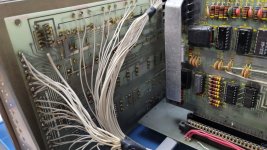 20230120_172723_resized_1.jpg779.9 KB · Views: 18
20230120_172723_resized_1.jpg779.9 KB · Views: 18 -
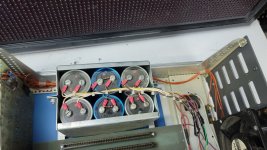 20230120_172715_resized_1.jpg726.9 KB · Views: 17
20230120_172715_resized_1.jpg726.9 KB · Views: 17 -
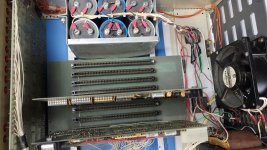 20230120_172713_resized_1.jpg900 KB · Views: 15
20230120_172713_resized_1.jpg900 KB · Views: 15 -
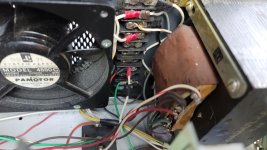 20230120_172706_resized_1.jpg659 KB · Views: 17
20230120_172706_resized_1.jpg659 KB · Views: 17 -
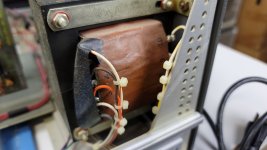 20230120_172700_resized_1.jpg552.8 KB · Views: 20
20230120_172700_resized_1.jpg552.8 KB · Views: 20 -
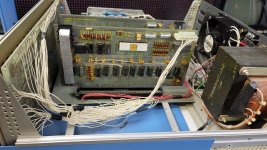 20230120_172655_resized_1.jpg863.2 KB · Views: 24
20230120_172655_resized_1.jpg863.2 KB · Views: 24 -
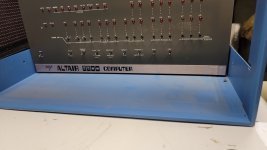 20230120_172651_resized_1.jpg489.8 KB · Views: 24
20230120_172651_resized_1.jpg489.8 KB · Views: 24 -
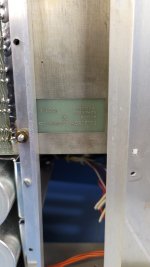 20230119_210107_resized_1.jpg539.3 KB · Views: 20
20230119_210107_resized_1.jpg539.3 KB · Views: 20

